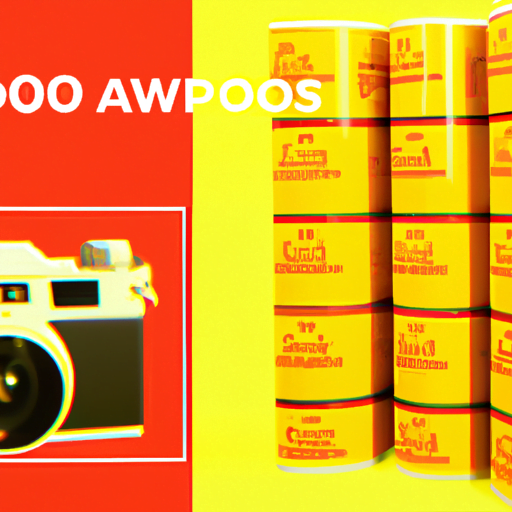
-
Table of Contents
- Motion Graphics: Creating Dynamic and Engaging Visual Experiences
- What are Motion Graphics?
- The Importance of Motion Graphics
- Examples of Effective Motion Graphics
- 1. Nike: “Dream Crazy” Ad
- 2. Google: “Year in Search” Videos
- 3. TED-Ed: Educational Videos
- Creating Dynamic and Engaging Motion Graphics
- 1. Clear and Concise Messaging
- 2. Visual Hierarchy
- 3. Timing and Rhythm
- 4. Consistent Branding
- 5. Emotion and Storytelling
- Conclusion
Motion Graphics: Creating Dynamic and Engaging Visual Experiences

Motion graphics have become an integral part of modern visual communication. From advertisements to films, motion graphics are used to captivate audiences and convey complex ideas in a visually appealing manner. In this article, we will explore the world of motion graphics, its importance, and how it can create dynamic and engaging visual experiences.
What are Motion Graphics?
Motion graphics can be defined as the art of using animation and visual effects to bring static graphics to life. It combines elements of graphic design, animation, and filmmaking to create visually stunning and engaging content. Unlike traditional animation, motion graphics focus on creating movement and visual effects for non-character-based designs.
With the advancement of technology and software tools, motion graphics have evolved into a versatile medium that can be used in various industries. From advertising and marketing to entertainment and education, motion graphics have found their place in creating dynamic visual experiences.
The Importance of Motion Graphics
Motion graphics play a crucial role in capturing and retaining audience attention. In today’s fast-paced world, where information overload is a common challenge, motion graphics offer a way to stand out and convey messages effectively. Here are some reasons why motion graphics are important:
- Visual Appeal: Motion graphics add a dynamic and visually appealing element to any design. By incorporating movement, color, and visual effects, motion graphics can create a captivating experience for the viewer.
- Storytelling: Motion graphics have the power to tell stories in a concise and engaging manner. By combining visuals, text, and audio, motion graphics can convey complex ideas and narratives effectively.
- Brand Identity: Motion graphics can help establish and reinforce a brand’s identity. By using consistent visual elements and animations, companies can create a recognizable and memorable brand image.
- Information Retention: Studies have shown that people remember information better when it is presented in a visual format. Motion graphics can enhance information retention by presenting data and concepts in a visually appealing and memorable way.
- Engagement: Motion graphics have the ability to engage viewers on an emotional level. By using compelling visuals and storytelling techniques, motion graphics can evoke emotions and create a deeper connection with the audience.
Examples of Effective Motion Graphics
Let’s take a look at some real-world examples of how motion graphics have been used to create dynamic and engaging visual experiences:
1. Nike: “Dream Crazy” Ad
In 2018, Nike released an ad campaign titled “Dream Crazy” featuring Colin Kaepernick. The ad used motion graphics to highlight the power of dreams and the importance of pursuing them. Through a combination of animated typography, dynamic transitions, and powerful visuals, Nike created a visually stunning and emotionally impactful ad that resonated with viewers.
2. Google: “Year in Search” Videos
Every year, Google releases a “Year in Search” video that summarizes the most popular search queries and events of the year. These videos use motion graphics to present data and information in a visually appealing and engaging way. By combining animation, typography, and audio, Google creates a compelling narrative that takes viewers on a journey through the year’s most significant moments.
3. TED-Ed: Educational Videos
TED-Ed, the educational branch of TED Talks, uses motion graphics to create visually engaging and informative videos. These videos cover a wide range of topics, from science and history to philosophy and psychology. By using animated characters, diagrams, and visual metaphors, TED-Ed brings complex concepts to life and makes learning more enjoyable and accessible.
Creating Dynamic and Engaging Motion Graphics
Now that we understand the importance of motion graphics, let’s explore some key principles and techniques for creating dynamic and engaging visual experiences:
1. Clear and Concise Messaging
When creating motion graphics, it is essential to have a clear and concise message. Identify the main idea or story you want to convey and distill it into a simple and impactful message. Use visuals, text, and audio to support and reinforce your message.
2. Visual Hierarchy
Visual hierarchy is crucial in motion graphics to guide the viewer’s attention and convey information effectively. Use size, color, and motion to prioritize important elements and create a clear visual flow. This will help viewers understand the content and navigate through the animation smoothly.
3. Timing and Rhythm
The timing and rhythm of motion graphics play a significant role in creating an engaging experience. Pay attention to the speed and duration of animations, transitions, and effects. Use timing to create anticipation, build tension, and deliver impactful moments.
4. Consistent Branding
For businesses and organizations, maintaining consistent branding is essential in motion graphics. Use consistent colors, typography, and visual elements that align with your brand identity. This will help create a cohesive and recognizable visual language that resonates with your audience.
5. Emotion and Storytelling
Emotion and storytelling are powerful tools in motion graphics. Use compelling visuals, characters, and narratives to evoke emotions and create a connection with the audience. Craft a story that engages viewers and takes them on a journey, leaving a lasting impression.
Conclusion
Motion graphics have revolutionized the way we communicate visually. By combining animation, design, and storytelling, motion graphics create dynamic and engaging visual experiences that captivate audiences. From advertising campaigns to educational videos, motion graphics have become an integral part of modern communication.
When creating motion graphics, it is important to focus on clear messaging, visual hierarchy, timing, branding, and storytelling. By following these principles and techniques, you can create visually stunning and emotionally impactful motion graphics that leave a lasting impression on your audience.
So, whether you are a marketer, filmmaker, educator, or simply someone interested in visual communication, embrace the power of motion graphics and unlock the potential to create dynamic and engaging visual experiences.
